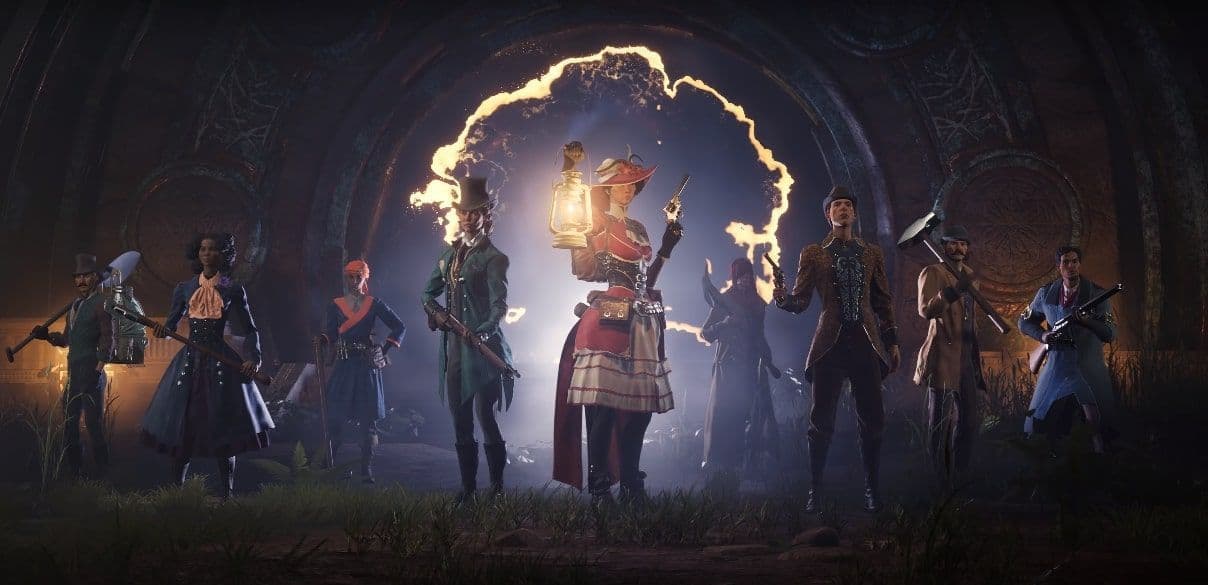Do you want to review the most exciting, most anticipated, and most erm...Victorian... survival game of the year? You're in luck.
You may have already seen our Nightingale first impressions and hot takes bounty, for which we're only after a few sentences per submission. For this bounty, we're looking for a deeper dive. As such, we're leaving this bounty open until March 15. Feel free to enter anytime between now and then, but make sure you get at least 20 hours of gameplay under your belt first.
A good review should be honest, well-researched, constructive, and critical. You don't need to spend long describing the features, but you do need to evaluate and appraise them, as well as the game as a whole. That said, Nightingale is currently in early access, so keep that in mind throughout your review.
We're looking for between 400 and 1,200 words in your review.
We'd also love to see some video entries (three minutes minimum).
If you feel you haven't properly explored an aspect of Nightingale, we'd prefer you acknowledged that and left it out.
You're more than welcome to add screenshots to supplement your review, but do follow the image-submission guidelines below.
Update 14/03: We've extended this bounty by a week and a half to allow for more submissions.
Task: Write or film a review of Nightingale
Format: Written or video
How to submit a written entry:
Hit the 'submit to this bounty' button just below this description - do not use the reply button unless you just want to comment on the thread, as replies will not be counted as entries!
Add a written response and feel free to include images.
How to submit a video entry:
Create your video and post it to your connected TikTok, YouTube or Instagram account.
In your post description, please tag us! We're @JustAbout__ on YouTube, @justaboutcommunity on Instagram, and @justaboutcommunity on TikTok. We'd also love it if you included #JustAbout.
Hit the 'submit to this bounty' button just below this description - do not use the reply button unless you just want to comment on the thread, as replies will not be counted as entries!
Share a link to your post in the box that appears, then expand it so we can view the video on Just About.
How to submit an image:
Take your screenshot and post it to your connected Twitter (X) or Instagram account. Don't forget to hide the HUD (F4 by default) or use photo mode if you can.
In your post description, please tag us! We're @JustAbout__ on Twitter (X), and @justaboutcommunity on Instagram. We'd also love it if you included #JustAbout.
Hit the 'submit to this bounty' button just below this description - do not use the reply button unless you just want to comment on the thread, as replies will not be counted as entries!
Share a link to your post in the box that appears, then expand it so we can view it on Just About.
Once the deadline closes, we’ll pick five submissions, award $20 to each of the winners, and may share them as curated content.
Disclaimer: Geographical and age restrictions apply. Please see our Terms of Use for more information on how bounties are created and rewarded on Just About. One reward available per member.
Take care not to breach copyright. Check our copyright policy before submitting.
Remember to link your social accounts before submitting multimedia assets!
Considering using AI to help? Think twice and first see our approach to AI content on Just About.
Image credit: Inflexion Games
Bounty Rewards
Reward closed
Created at . Page last updated at .
Deadline at .





